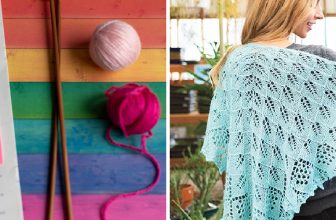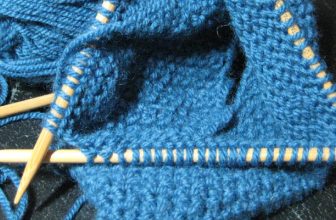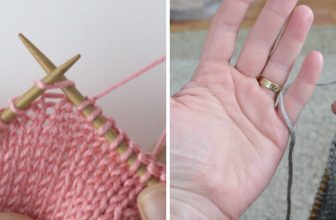How to Double Yarn with One Skein
Double knitting is a versatile technique that can elevate your projects, offering unique textures and thickness without requiring multiple skeins of yarn. By effectively doubling the yarn from a single skein, crafters can create denser and warmer fabrics, ideal for cozy garments and accessories. This method not only adds depth to your work but also enhances durability, making it a popular choice among knitters and crocheters alike.
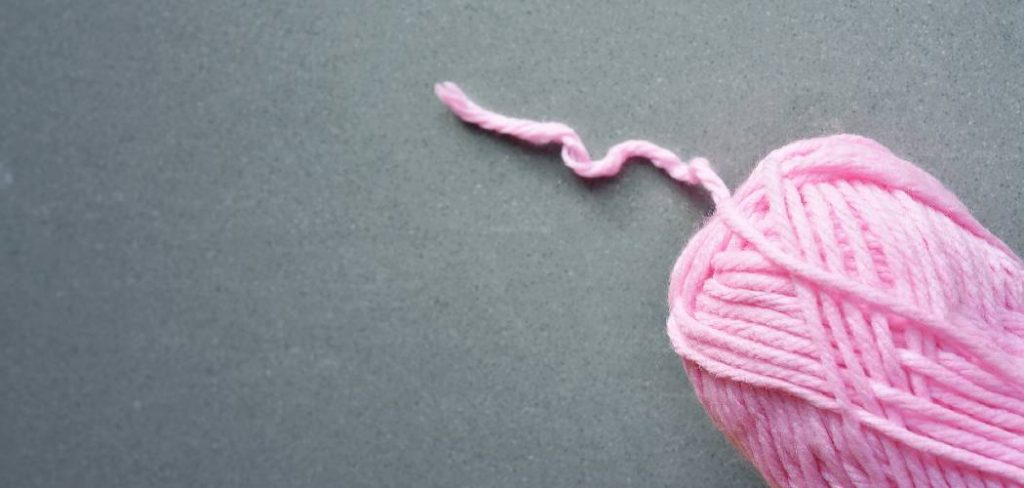
In this guide, we will explore the steps involved how to double yarn with one skein, providing you with the knowledge to enhance your craft and experiment with new creative possibilities.
Importance of Doubling Yarn
Doubling yarn is an integral technique for crafters looking to achieve a variety of benefits in their projects. One of the primary advantages is the increased thickness of the fabric, which can lead to warmer and more insulated pieces, making it ideal for winter garments such as sweaters and hats. Furthermore, this method allows for a more voluminous appearance without the need for additional skeins, making it a cost-effective approach.
Additionally, doubling yarn can significantly enhance the texture of finished pieces, adding depth and interest that can transform a simple design into a standout creation. This technique also provides an opportunity to experiment with colour variations, as blending different strands can yield unique visual effects, expanding the creative possibilities available to knitters and crocheters. Overall, mastering the art of doubling yarn can enhance both the aesthetic quality and functionality of your handmade items.
Choosing the Right Projects for Doubled Yarn
When selecting projects to utilise doubled yarn, consider patterns and designs that complement the yarn’s increased thickness and unique texture. Suitable projects include bulky scarves, warm hats, and cosy blankets, all of which benefit from the added warmth and density provided by this technique. Additionally, items like shawls and cardigans can achieve an appealing drape while maintaining structural integrity.
It’s also advantageous to choose patterns that incorporate simple stitches or textures, allowing the visual effects of the doubled yarn to shine through without overwhelming the design. By thoughtfully selecting projects that align with the qualities of doubled yarn, crafters can create beautiful, functional pieces that showcase their skills and creativity.
10 Methods How to Double Yarn with One Skein
1. Center-Pull Method
The center-pull method is one of the simplest ways to double yarn from a single skein. Start by finding the end of the yarn from the center of the skein and the end from the outside. Holding both ends together, begin crocheting or knitting as you normally would. This method creates a thicker fabric and can be used for any project that calls for doubled yarn.
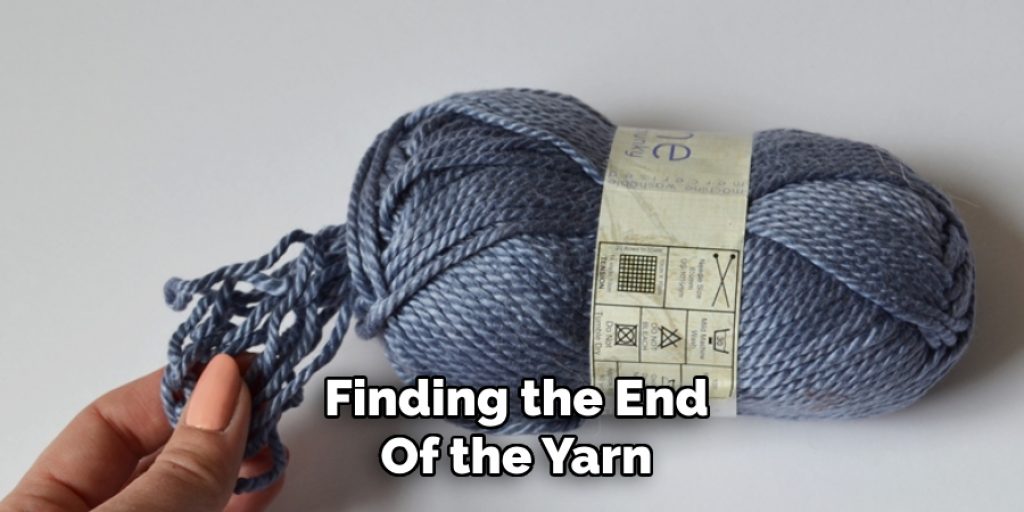
The main advantage is the ease of setup, as you simply pull from both the inside and outside of the skein. However, it can sometimes lead to tangling, so it’s important to keep the skein organized as you work.
2. Wind Into Two Balls
Another effective method is to wind the skein into two separate balls. Start by unwinding the skein and dividing it into two equal lengths. Use a yarn winder or your hands to create two separate balls of yarn. Once you have two balls, you can hold the ends together and crochet or knit as if you were using two skeins.
This method ensures that you have an even amount of yarn for your project and can help prevent tangling. It’s particularly useful for larger projects where you need a consistent thickness throughout.
3. Chain Plying
Chain plying, also known as Navajo plying, is a technique borrowed from spinning that can be adapted for crochet. Start by creating a slipknot with your yarn. Make a loop and chain three stitches. Pull the working yarn through the loop to create a new loop, effectively creating a long chain of three-strand sections.
As you crochet or knit, continue to pull the yarn through the loop to maintain the three-strand chain. This method is excellent for maintaining consistent tension and thickness, making it ideal for projects where uniformity is crucial.
4. Continuous Chain
The continuous chain method involves creating a long chain before starting your project. Begin by making a slipknot and chaining the desired length. Once you have your chain, work into the chain as if it were a strand of yarn, holding the chain and the working yarn together. This creates a doubled effect as you crochet or knit. The continuous chain method is particularly useful for projects that require a consistent, thick yarn throughout, and it can help maintain an even tension.

5. Figure-Eight Wind
The figure-eight wind method helps in creating two strands from one skein without cutting the yarn. Start by wrapping the yarn around your hand in a figure-eight pattern. Continue wrapping until you have a sizable amount of yarn in the figure-eight shape. Once done, cut the loop at one end to create two separate strands.
Hold these strands together and begin crocheting or knitting. This method is efficient and helps avoid cutting the yarn prematurely, making it easier to manage the yarn while working on your project.
6. Magic Ball
The magic ball method involves winding a ball of yarn with a doubled effect. Begin by pulling a length of yarn from the center of the skein and matching it with the end from the outside. Wind these two strands together into a ball. As you crochet or knit, use this magic ball to maintain the doubled effect. This method is convenient and ensures that the yarn remains organized and tangle-free throughout your project. It’s particularly useful for larger projects where you need a continuous supply of doubled yarn.
7. Loop and Fold
The loop and fold method is simple yet effective. Start by pulling a length of yarn from the skein and folding it in half to create a loop. Hold the loop and the working yarn together, effectively creating a doubled strand. As you crochet or knit, continue to pull the yarn through the loop to maintain the doubled effect. This method is ideal for smaller projects or sections where you need a temporary double strand. It provides flexibility and ease of use without the need for cutting or winding the yarn.
8. Yarn Spool Method
Using a yarn spool or bobbin is another efficient way to double yarn. Start by winding the yarn onto a spool or bobbin, creating a doubled effect as you wind. Once you have wound the desired amount, use the yarn from the spool for your project, holding the doubled strands together. This method helps keep the yarn organized and reduces the risk of tangling. It’s particularly useful for intricate projects where consistent tension and thickness are essential.
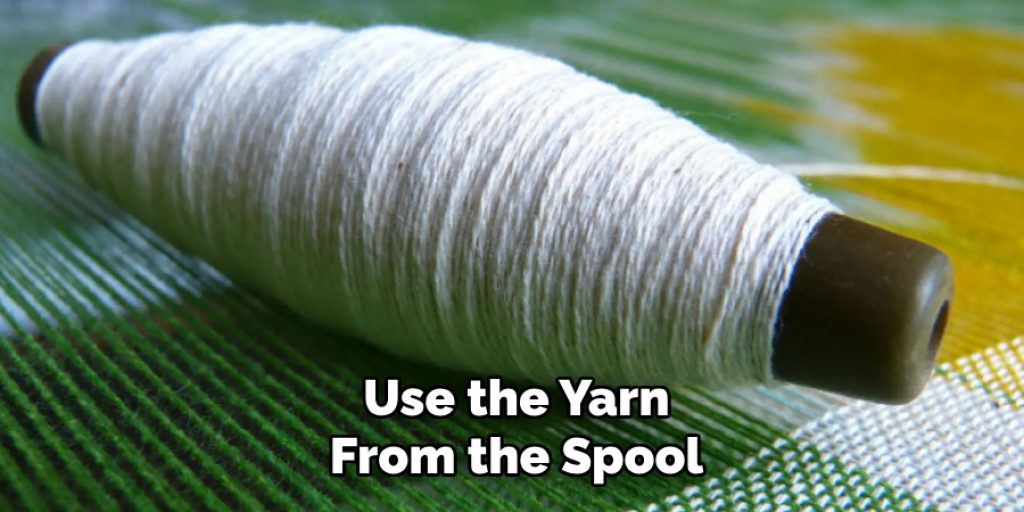
9. Two-End Ball
The two-end ball method involves creating a ball of yarn with both ends accessible. Start by pulling the end of the yarn from the center of the skein and the end from the outside. Wind these two strands together into a ball, ensuring that both ends are available for use. When you start your project, hold the two ends together to create the doubled effect. This method is convenient and ensures that you have a consistent supply of doubled yarn throughout your project, making it ideal for larger or more complex crochet work.
10. Knotted Loop Method
The knotted loop method involves creating loops and knots to double the yarn. Start by pulling a length of yarn from the skein and creating a loop. Tie a loose knot to secure the loop. Continue pulling the yarn through the loop, creating additional loops and knots as needed. Hold the loops and the working yarn together to maintain the doubled effect as you crochet or knit. This method is flexible and allows for easy adjustments, making it suitable for projects that require varying thicknesses or textures.
Common Mistakes to Avoid
When working with doubled yarn techniques, it’s essential to be mindful of common pitfalls that can lead to frustration or uneven results. One frequent mistake is not maintaining consistent tension, which can cause your project to look uneven or lead to discrepancies in stitch size. Ensure you are pulling both strands evenly as you work.
Another mistake is failing to properly secure the yarn ends, which can result in tangling or unravelling as you crochet or knit. Take the time to organize your skein or ball before starting your project to avoid this issue. Additionally, inadequate awareness of the yarn’s twist direction can lead to yarn snarls; always pay attention to the twist when holding multiple strands together.

Conclusion
In summary, doubling yarn can greatly enhance your crochet and knitting projects by providing added thickness and strength. The various methods outlined—from wind techniques to the magic ball approach—offer creative solutions to manage your yarn efficiently while preventing tangling. By selecting the method that best suits your project’s needs, you can achieve uniform tension and a beautifully finished piece. Hopefully, this article gave you some helpful tips about how to double yarn with one skein successfully, so now that you have the proper knowledge on how to get the job done, why not give it a try today?


